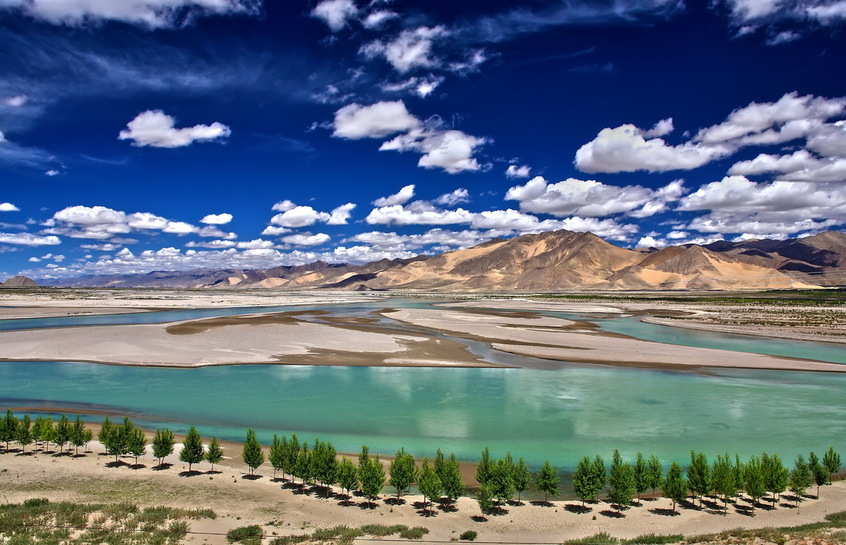Engineers in China are testing techniques that could be used to build the world’s longest ever tunnel – 1,000km in length – to divert a Tibetan river and make the dry western region of Xinjiang “like California”.
The proposed tunnel, which would drop down from the world’s highest mountain plateau in multiple sections connected by waterfalls, would also have bendy joints to survive unstable ground conditions.
China’s longest tunnel currently is the eight-year-old 85km Dahuofang water project in Liaoning province, while the world’s longest tunnel is the 137km main water supply pipe beneath the city of New York.
The Chinese government has already started building a record-breaking test tunnel in the centre of Yunnan province that will be more than 600km long, reports South China Morning Post, citing local media.
Comprising more than 60 sections, each wide enough for two high-speed trains, it will pass through mountains in an area plagued by unstable geological conditions.
Researchers the Yunnan tunnel would be a “rehearsal” of the new technology and engineering methods needed for the Tibet-Xinjiang tunnel, which would divert the Yarlung Tsangpo River in southern Tibet to the Taklimakan Desert in Xinjiang.
Downstream, in India, the Yarlung Tsangpo River becomes the Brahmaputra, which joins the Ganges in Bangladesh.
According to the newspaper, a proposal to divert water from Tibet was first made by Qing dynasty officials in the 19th century.

Yarlung Tsangpo River, in Shigatse, Tibet (Boqiang Liao/Wikimedia Commons)
In recent decades, officials have come up with engineering blueprints involving huge dams, pumps and tunnels. But the enormous cost and risk, plus protests by neighbouring countries, meant it has never got off the drawing board.
Now China is taking a quiet, step-by-step approach to make it happen, Zhang Chuanqing, a researcher at the Chinese Academy of Sciences’ Institute of Rock and Soil Mechanics in Wuhan, told the Post.
Zhang said the tunnel in Yunnan is a pilot. “It is to show we have the brains, muscle and tools to build super-long tunnels in hazardous terrains, and the cost does not break the bank,” he told the newspaper.
“Fault zones are our biggest headache,” Zhang said. “If we can secure a solution, it will help us get rid of the main engineering obstacles to getting water from Tibet to Xinjiang.”
“With new water from Tibet, Xinjiang would boom like California,” he said.
According to the Post, the solution engineers settled on was inspired by subway trains, whose carriages are connected by elastic joints. In the tunnel, Zhang said, flexible materials that were also waterproof and strong would be used to bind concrete pipes together when they passed through fault zones.
The Yunnan tunnel will take eight years to build and will cost around $11.7bn. It will carry more than three billion tonnes of water each year from northwestern Yunnan to the province’s dry centre and help 11 million people, the Yunnan provincial government says, according to the Post.
Top image: A view of the Taklamakan desert in Xinjiang Uyghur Autonomous Region (Pravit/Wikimedia Commons)
Comments
Comments are closed.











What happens to the Brahmaputra when the tunnel opens..?
That is unthinkable. Can’t allow this to happen, has Tibet not suffered enough death, murder and continued destruction.
What happens to the Brahmaputra when the tunnel opens? It’s essential function will be diverted at the very least, environmentally much worse.